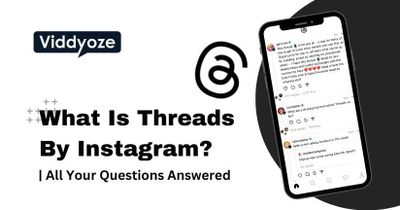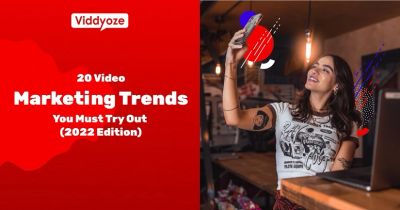Grab your abacus, we’re talking numbers today. Yeah, we know, lots of people are freaked out by numbers, especially big ones, but when it comes to digital advertising, they are unavoidable (if you’re doing it right, that is).
Over the last 12 or so months, we’ve seen a lot of numbers. And we like to think we’ve gotten pretty good at counting them, figuring out where they’re coming from and understanding what they mean to our business long term.
Here’s how we got there.
Track Everything
When you’re scaling up your ad spend, it’s really important to know exactly where your numbers are coming from. In our experience, the more granular you can get, the better.
So, on Facebook, we started tracking things right down to ad level, to see how many sales we were getting from each individual ad. Google, of course, has a similar way of tracking things.
… which can only mean one thing: there’s an issue with Google, Facebook – or both
To put that into perspective, we were running 100s of ads a week back in our peak scaling period. Altogether, that’s a lot of sales and a lot of data to process.
Each platform tracks its respective data. On top of that, we track our own numbers using Pay Kick Start and some software we developed ourselves. By “our own numbers”, we mean real sales. We’ll explain that bit next.
Don’t Believe Everything You See
There’s nothing wrong with the way Google and Facebook track their numbers. Individually, that is.
However, when you’re firing tens of thousands of pounds a day into each platform, and they’re working together, there can be some issues. And one of the major things we learned from spending $1 million on digital ads is this: you can’t always trust the figures those platforms give you.
Here’s why.
At the end of a hypothetical day (we’re using smaller numbers here to keep things simple), we’d have 150 sales from Facebook… according to Facebook. We’d also have 150 sales from Google… according to Google.
So that’s 300 sales in total, right? Well, not exactly.
Over that same day, our own data is only showing 200 sales. We know our data is right because it’s all collected as actual sales made. Which can only mean one thing: there’s an issue with Google, Facebook, or both.
What it is ultimately is a question of attribution.
Attribution: So, Who Got The Sale?
If a person sees your ad on Facebook in the morning, searches your brand name on Google in the afternoon, and clicks a YouTube ad in the evening and buys your product, who do you assign the sale to?
You could say Facebook, as that’s where the buyer cycle started, and arguably, without that, you wouldn’t be retargeting them later while they’re watching old wrestling videos on YouTube. Or, you could say YouTube/Google, because that’s the ad that finally got the sale.
As you can see, there’s an argument for both. Obviously, each platform is going to be biased towards itself, and that’s where you may see a discrepancy in your numbers. This leads to the question of attribution: how do you assign that sale?
Digital advertising is full of ups and downs
For Viddyoze, it’s the last place the buyer came from. We have a landing page for Facebook ads and a landing page for Google ads. The last ad that a potential buyer clicks will take them through to one of those sales pages – and that’s how we attribute it. That might sound simple, but really, it’s about deciding early how you’re going to track things.
To get an even clearer picture, we’ve also started testing certain variables. For example, say we were spending approximately $20,000 a day on both platforms. What we’d do is cut $10,000 from one to and see how it affected our overall performance. It’s a constant challenge, a never-ending process, and a lot of work, but, in our experience, it’s the best way to understand your real numbers.
Big Picture Thinking
Digital advertising is full of ups and downs. We’ve always known that. But in the last 12 or so months, we’ve come to realize that it’s all a long game. Bad days will happen, but the big picture is really what’s important.
A bad day could be any day you spend over your cost per acquisition price. Ours is around $90 – the price we can afford to spend on a customer while still making a profit. If we spend more than that on one day, it’s not a huge issue, so long as we make up for it somewhere else.
Of course, if you have a lot of bad days, you’ll want to do something about it. That’s why we work on a seven-day rolling average to track overall performance. Every day, we look at the previous seven days to keep on top of the numbers. That way, it’s easier to spot a problem.
Numbers, Numbers, Numbers
Ultimately, numbers are there to be counted. And as long as you establish a way to do that, there aren’t too many issues.
The more you scale, the more important this becomes. For businesses just starting out, both Facebook and Google’s video metrics should be accurate enough. When your ad strategy starts to become more complex – and your spend increases – that’s when you need to start thinking about tracking your own data, as we did.
And buy an abacus for your office. Not for counting, unless you want to. We just think they look cool.
This article is part of our What We Learnt Spending $1 Million On Paid Ads Over 30 Days series. Check out the rest below:
- There Will Always Be Buyers (Even In A Pandemic)
- How To Build An Awesome Landing Page That Converts
- How To Make a Facebook Video Advert That Actually Converts
- When It Comes To Paid Ads: Test, Test, Test
- Scaling Up: When Things Are Working, They’re Working For A Reason
- Building, Maintaining And Protecting You Brand Online
- The Importance Of Being Everywhere: Our Cross-Platform Ad Strategy
- Paid Advertising: Know Your Numbers



